About broadband microwave switches from Peregrine Semiconductor
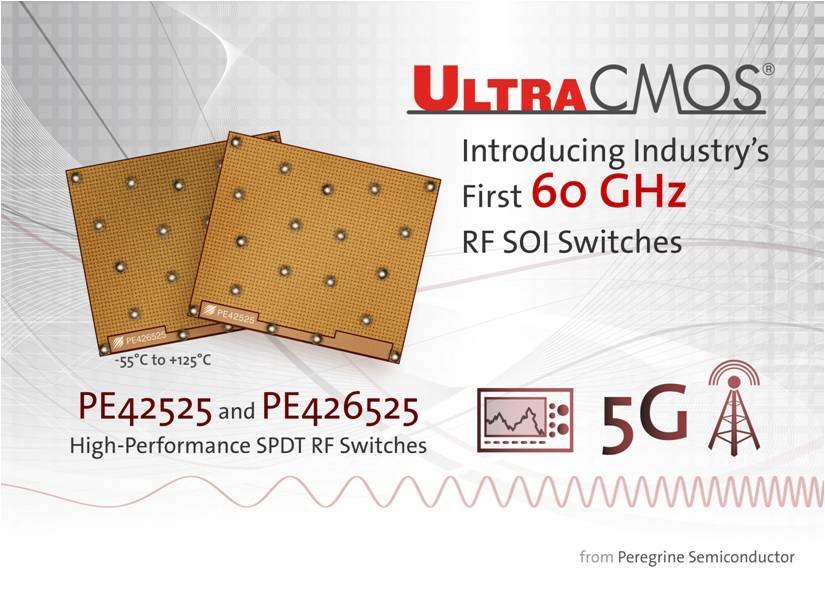
Peregrine Semiconductor is already known to our readers. She specializes in the development of CNS technology - Silicon On Sapphire, (UltraCMOS), which has high radiation resistance and is used for both civilian and highly reliable (Space, Hi-Rel) applications. The advantages of the technology are: low power consumption, low cost, high linearity, extended temperature range and scalability. According to these parameters, they push out of the market some traditional GaAs switches from such companies as: Skyworks, MACOM, RFMD (Qorvo), Hittite (ADI). Switching speed and operating power are generally lower than other manufacturers.
This article reviews the broadband switches of the Peregrine Semiconductor company and compares them.
Of Peregrine Semiconductor products, microwave switches have the widest range - more than 50 products, which continue to expand - in the direction of increasing the operating frequencies, linearity, operating temperatures, etc.
')
Overview of broadband switches
The basic parameters of wideband switches with an upper operating frequency of 8 to 60 GHz from Peregrine Semiconductor are shown in Table 1 below. Due to their high linearity, the company introduced a new evaluation criterion: P0.1dB, instead of the usual P1dB. This criterion began to be used by other companies, in particular MACOM.
Table 1 Broadband switches company "Peregrine Semiconductor"

The company's new products are PE42525 (-40 ... + 105 ° C), PE426525 (-55 ... + 125 ° C) broadband switches with a 9 kHz to 60 GHz band and a record switching time in the range: 8 ns. Their main characteristics are shown in Fig. 1 below. Samples (crystals) are currently available, mass production is planned for the beginning of 2017. To control these switches, you need two anti-phase signals with levels of -3 V / +3 V and a current of only 450 nA. They are available in the Flip-Chip package and are pin-compatible with the PE42524 switch with a 10 MHz - 40 GHz band.
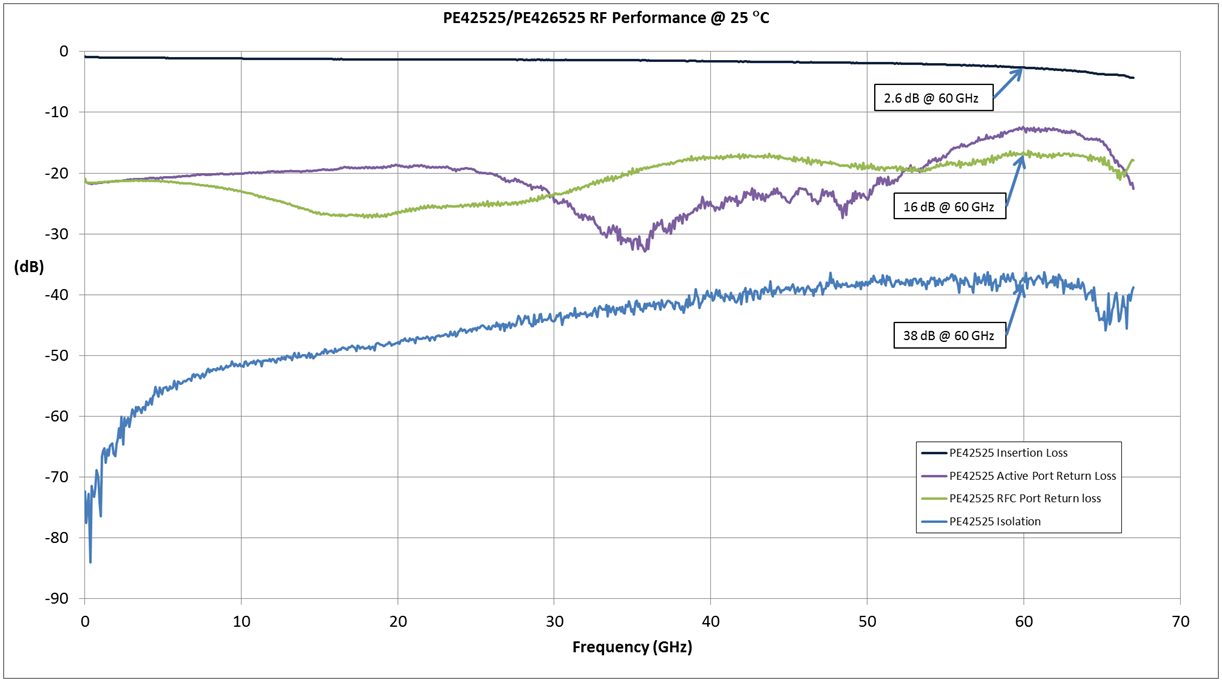
Fig.1. Loss, reflection and isolation of the switches PE42525 / PE426525 depending on the frequency.
Note that the PE95420, PE95421 switches are radio-resistant components that are available through E2V , which provides testing and export controls. At the moment, licenses are issued only for international projects. The PE42020 is a “True DC” chip, or “Real Constant Voltage Switch”, which is capable of switching both constant voltage and microwave signals up to 8 GHz.
Comparative analysis of SPDT switches up to 25/40/60 GHz
We will conduct a comparative analysis of the switches. Unfortunately, direct comparison of products from different manufacturers is rarely possible, therefore the numbers stated above are conditional. This is due to the fact that, as a rule, a specific switch is developed to meet the requirements of a large customer. Microwave measurements outside of these requirements are usually not carried out. As a result, the switch can be operable far beyond the declared frequency band, but its use there is not guaranteed by the manufacturer. The same factor explains the large variation in individual parameters, it would seem one class of switches.
We will conduct a comparative analysis of switches up to 25 GHz, taking PE42522 from Peregrine Semiconductor as a basis. Their main parameters are shown in Table 2 below. Obviously, by the totality of the parameters of PE42522, it is difficult to call it “the best in its class”. Nevertheless, he has some competitive advantages. So, IP3 on the 59dBm input has only the MACOM switch, the power consumption of which is higher> 1000 times. Loss and isolation at low frequencies also look good. PE42522 has a single control input, compatible with 3.3 V logic, which is convenient for the user. When a negative voltage is applied, the microcircuit can be used in bypass mode.
Table 2. Comparison of PE42522 with leading global manufacturers:
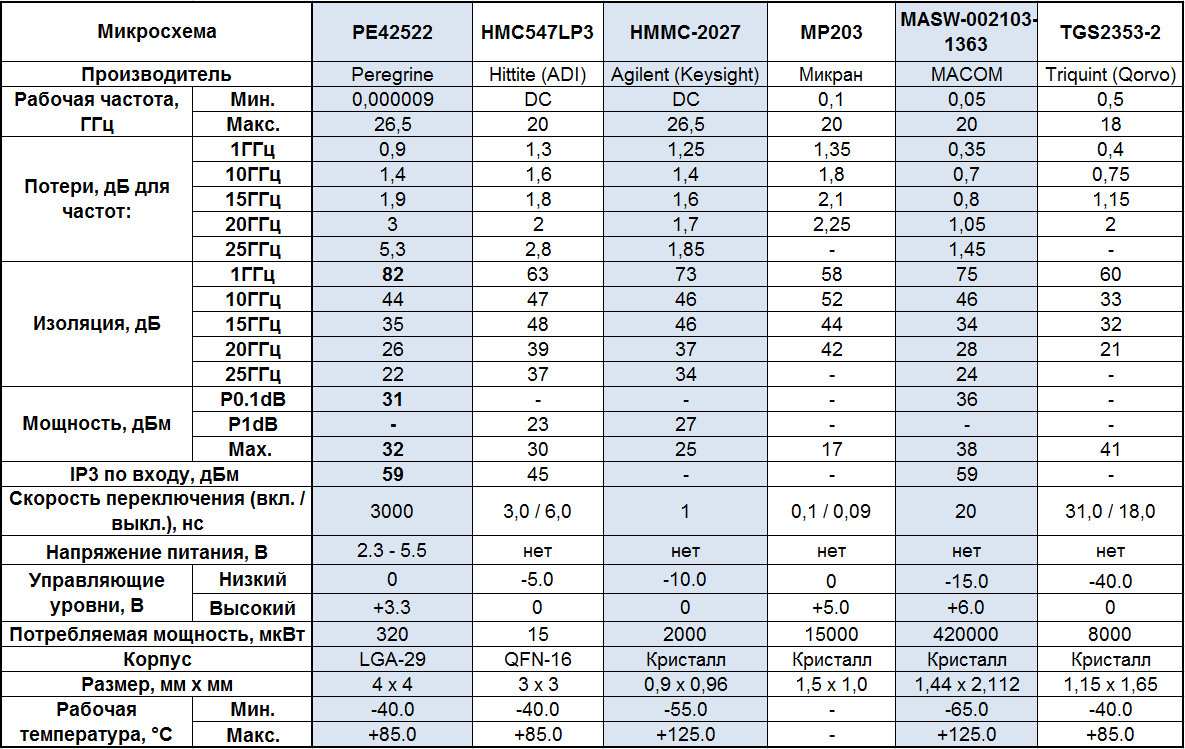
Let's continue the comparison for the class “up to 40 GHz” based on PE42524. The main parameters of the switches are shown in Table 3 below. Here, Peregrine Semiconductor sets small records. PE42524 ahead of everyone (in the table) both in terms of 15 nW consumption and 32 dBm permissible power! And - it is far from being the slowest. :) Record consumption was achieved due to the failure of the power supply of the chip as such, which, however, led to a two-polar antiphase control of -3.3 / +3.3 V. If we talk about isolation in the entire frequency range and IP3 at the input, then PE42524 is better than ADRF5021, and again at the expense of many times greater power consumption.
Table 3. Comparison of PE42524 with leading global manufacturers:
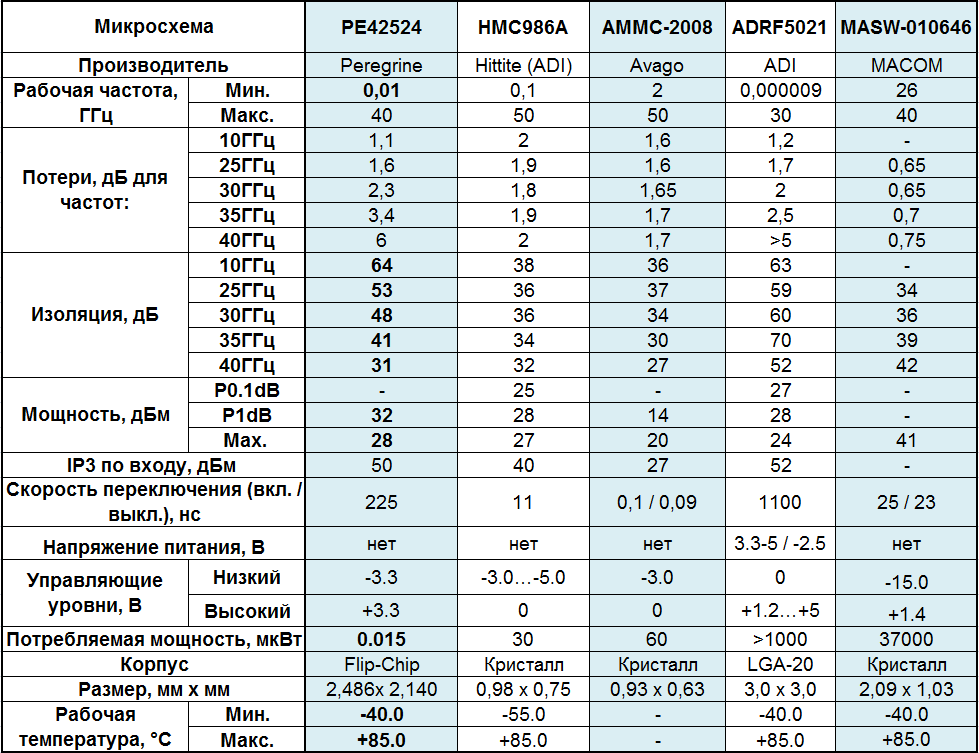
Our small comparative analysis is completed by the “up to 60 GHz” class based on PE426525. Here we can already speak about the “best switch in the class” according to a set of parameters. These include: low power consumption of 2.7 µW, insulation, maximum power, IP3 input. The switching speed PE426525 is second only to AMMC-2008. Its losses at some frequencies are better than those of similar firms Hittite (ADI) and Avago. We also note the extended operating temperature range (-55 ... + 125 degrees C) - the widest in the entire range of switches of Peregrine Semiconductor.
Table 4. Comparison of PE426525 with leading global manufacturers:
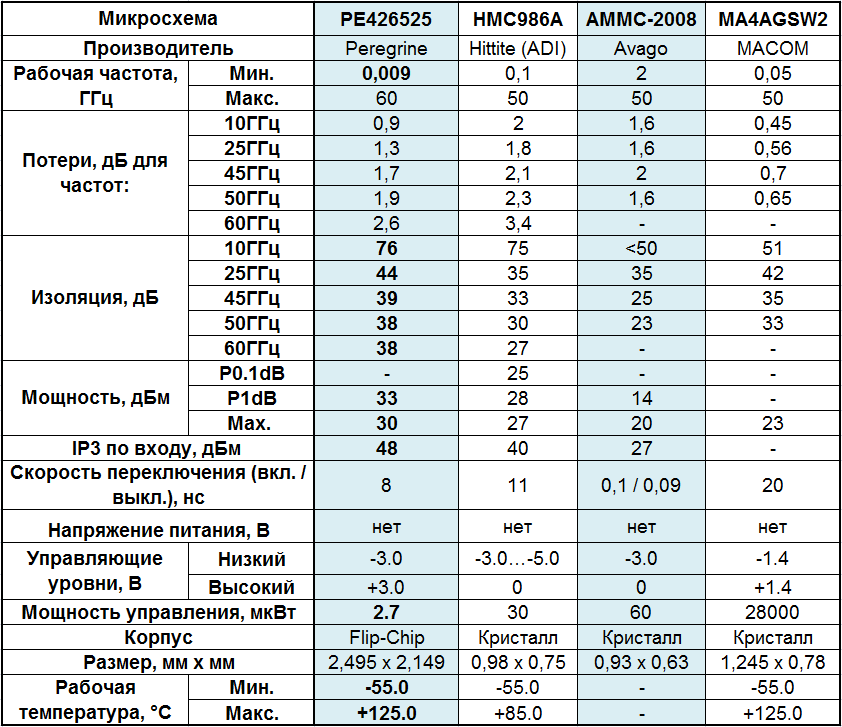
We wish Peregrine Semiconductor success in its new developments. Who knows, maybe in 2018 we will see UltraCMOS switches up to 80 GHz?
The following articles can also be downloaded from the EFO company website:
→ “UltraCMOS from Peregrine Semiconductor - a new technology for creating mixers on Si”
→ “Peregrine Semiconductor”: ICs for phase control and more! ”
→ "Double-pole switch PE42020 - a novelty from the company Peregrine Semiconductor"
Source: https://habr.com/ru/post/316526/
All Articles